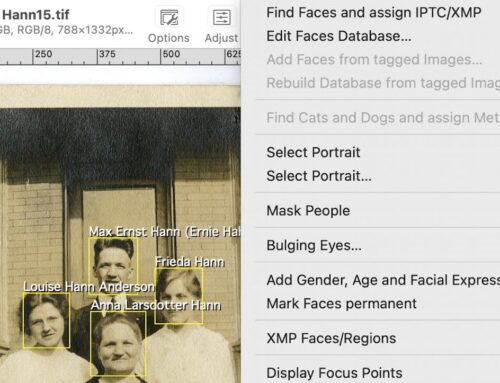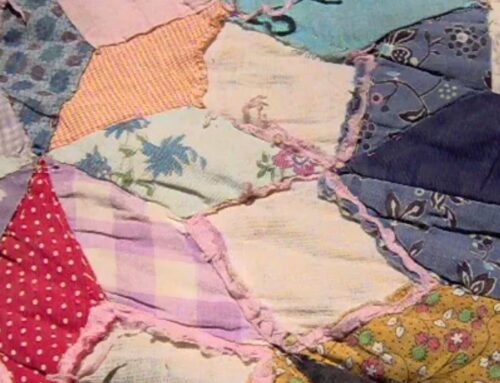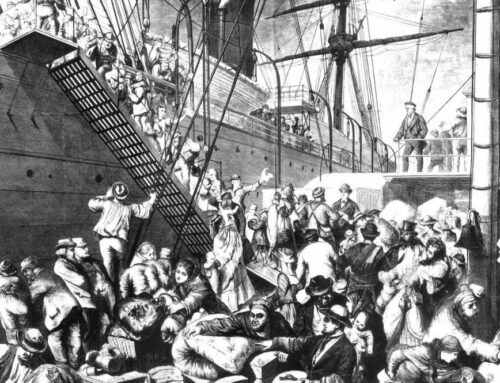 These days, genealogists are also personal digital archivists. As that family archivist, could you create a digital time capsule of your family’s history?
These days, genealogists are also personal digital archivists. As that family archivist, could you create a digital time capsule of your family’s history?
I’ve opened and reburied a few physical time capsules in my time as a librarian and archivist. (The International Time Capsule Society provides tips on creating a physical capsule, if you’re interested.)
But could a digital time capsule work? Would it be usable in 10 or 20 or more years? Since we all hope that our family history research will be passed on to family members and other researchers, it’s a question worth considering.
At its most basic, a time capsule is a really just a collection of memorabilia documenting a place, organization, or family at a particular time. So a digital time capsule would contain a collection of born-digital and scanned files of photographs, documents, records, charts, family trees, and physical keepsakes that tell your family’s story.
Digital Time Capsule Third-Party Solutions
YouTube Time Machine saves uploaded videos and makes them available by year they are tagged with. The Wayback Machine saves websites at particular moments in time. Institutions subscribe to their Archive-It service, but genealogists would probably only need to create a permanent URL to their family history sites using the Wayback Machine.
Flickr and Picasa and other photo storage sites are also available, but may have issues retaining metadata over time. Cloud-based solutions such as these require no software or OS, just an Internet connection. The downside is trying to predict whether and which of these companies will be around decades in the future.
The Genealogy Center at Allen County Indiana Public Library – one of the country’s premier genealogy libraries – wants genealogists to share their research with them. Their collecting policy welcomes family histories in print or digital formats. Click here for more info.
Digital Time Capsule Hard- & Software
The alternative to a Web-based digital time capsule is to create a stand-alone version on a laptop or tablet. Saving digital files is not enough. Over long periods of time, it’s equally important to also preserve the operating system and applications that you used to create the files.
An older laptop you’re about to replace with a newer model would be a logical choice. A few things to remember about long-term storage of hardware:
- Keep your power cords
- Charge the battery to 50 percent and remove it and store it separately
- Store the laptop in a cool, dry place without big swings in temperature
File Formats
The Signal, the Library of Congress digital preservation blog, suggests that older files might be more easily read as technology advances in the future. They have the following recommendations for file formats:
To really use a file fully, you would need a complete operating environment (operating system) and the program that created it, or at least one that recognizes it….
So don’t rely on a single format – save files in at least two formats that can be read by multiple types of software. To maximize the odds of compatibility with future computers, save copies of scans and digital photos as JPEGs and an additional format such as TIFF or GIF, or even PDF. Save copies of word processor documents as text (.txt), PDF, and/or XML. Save copies of spreadsheets and databases as comma-delimited files (.csv). Save video files as MPEG-4 (.mp2) or AVI. Save audio files as MPEG-3 (.mp3), WAVE, or BWF. To select appropriate file formats, check out criteria at our Sustainability of Digital Formats website.
A Note on Optical Media
CDs and DVDs are optical storage media whose days are probably numbered, just as the floppy disks that preceded them are now antiques. A drive to physically read the disk and the operating system to power the drive is necessary to read the disk’s information. The failure rate on optical media over time is also high. Despite their popularity during the past 10-15 years, CDs and DVDs are not a good choice for a digital time capsule.
You’ll need a method for alerting yourself and members of your family to the location, URLs and passwords for your digital time capsule, whether online or on a laptop. LC recommends trying futureme, whose tagline is “Write a Letter to the Future.”
One final recommendation: printouts and photocopies of your family records are also important because they’re stable. Use 100 percent rag paper for these valuable copies.




Thx, Jana!
Nancy,
I want to let you know that your blog post is listed in today’s Fab Finds post at http://janasgenealogyandfamilyhistory.blogspot.com/2014/03/follow-friday-fab-finds-for-march-21.html
Have a wonderful weekend!